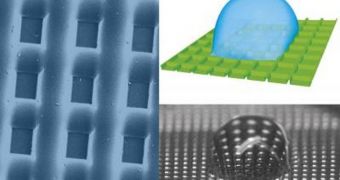German investigators announce the development of a new software that allows them to research the theoretical properties of self-cleaning, liquid-repellent materials, depending on the application they are intended for. The texture of lotus leaves, for example, could prevent spectacles from getting wet.
The simulation experts at Fraunhofer Institute for Mechanics of Materials IWM developed is capable of modeling the behavior of any type of liquid on all types of surface geometries, ranging from flat and curved to intricate structures, EurekAlert reports.
In addition, the program can take into account complex factors, such as, for example, the atomic interactions that occur between the liquid and the surface, and the impact that microscopic structures at the surface has on the liquid.
Based on this model, it may soon be possible to create water-repellent materials, as well as more resistant anti-corrosion coatings for a variety of industrial applications.

 14 DAY TRIAL //
14 DAY TRIAL //